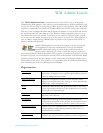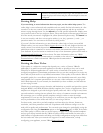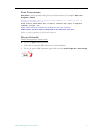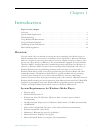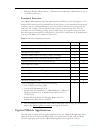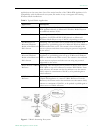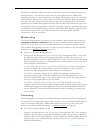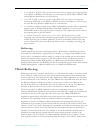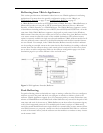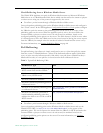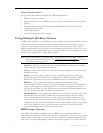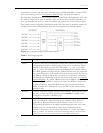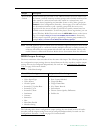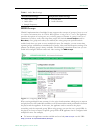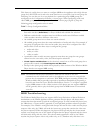
Introduction
VBrick WM Appliance Admin Guide 5
• Use an HTTP or RTSPU URL to get the unicast stream. You can create a web page that links
to the HTTP or RTSPU stream directly or you can open the HTTP URL or RTSPU URL
using Windows Media Player or a web browser.
• Use an HTTP URL to access the .asx file on the VBrick. You can create a web page that
contains an HTTP link to the HTTP or RTSPU asx file on the VBrick or you can open
the asx URL using Windows Media Player or a web browser.
• Use VBrick StreamPlayer Program Guide. VBrick's StreamPlayer product adds an automatic
program guide to Windows Media Player. Each WM Appliance on your network is
automatically listed in the program guide on the player. You simply click on the entry in
the program guide to play the stream.
• Use VBrick's EtherneTV Portal Server (v3.2 or later). The Portal Server is a fully
integrated video solution with automatic program guides and an integrated player for live
streams from all types of VBrick appliances as well as on-demand streams from video
servers. EtherneTV offers many advanced features such as scheduling, recording, and
access control.
Reflecting
VBrick supports the concept of reflecting wherein a WM stream is redistributed to other
network devices. Reflecting is supported by two models: (1) a single channel WM Encoder
device, and (2) a standalone reflector model. A variant of the models can have hard drives.
Streams are acquired either via push or pull. The reflector can be configured to receive a
stream pushed from another WM appliance or a Reflector, or pushed from a Microsoft
Windows Media Encoder. The Reflector can also be configured to pull a stream from another
VBrick WM Appliance, a Microsoft WM server, or a Microsoft WM Encoder.
VBrick Reflecting
Reflecting involves an "encoder" which creates a video stream and sends it over the network
and a "reflector" which receives the network stream from the encoder and retransmits the
stream to players or other reflectors. In many applications, VBrick appliances are used both
as the encoders and as the reflectors, but since VBricks are compatible with other devices in
the Microsoft Windows Media ecosystem so you can just as easily use a VBrick as the
encoder and a Microsoft or Real Helix Server as the reflector, or you can use a Microsoft
Encoder or Microsoft Server as the source of a stream for a VBrick Reflector.
There are two types of VBrick Appliances that can do reflecting. One type is the Single
Channel WM Encoder Appliances (part numbers 9190-4200-xxxx) which have both encoder
and reflector features in the same unit. The other type is the VBrick WM Reflector
Appliances (part numbers 9190-0200-xxxx) which contain only reflector features. Both types
of reflectors can optionally include an internal hard drive for archiving.
Regardless of the mix of VBrick or Microsoft products for encoding and reflecting, the
transmission of the stream over the network from the encoder to the reflector can be done
either by "push" or by "pull." Although they accomplish essentially the same thing, there are
various reasons to choose one or the other but the most important factor is what kind of
firewalls exist between the devices. For example, if an encoder behind a firewall needs to
distribute its stream through a public reflector, then pushing from the encoder to the
reflector works well. Conversely, if a reflector behind a firewall needs to acquire a stream
from a public encoder or server, then pulling from the source to the reflector works better.



